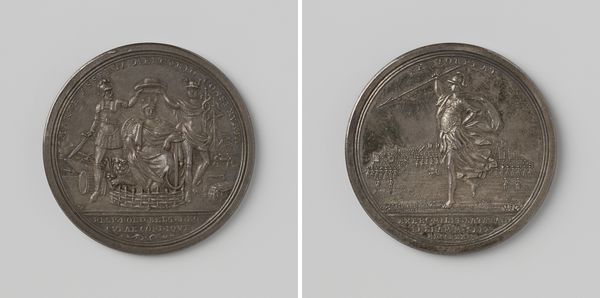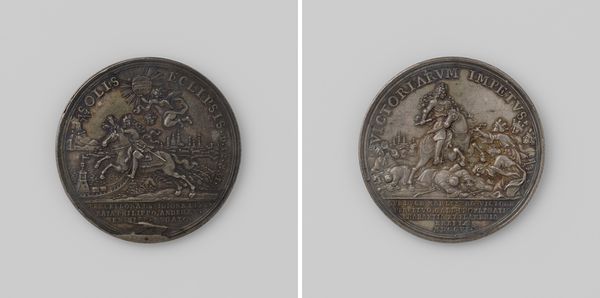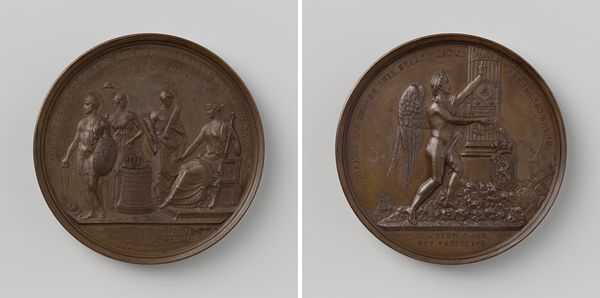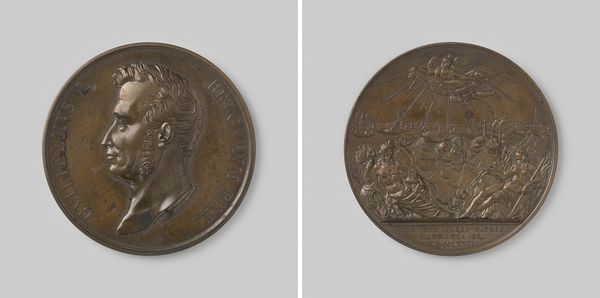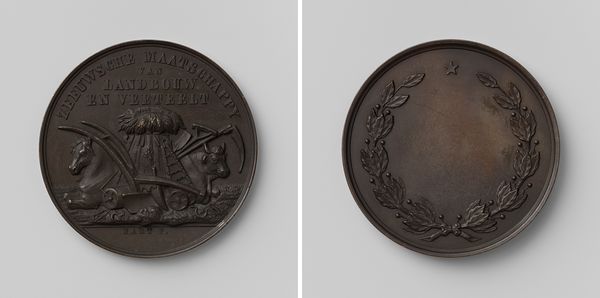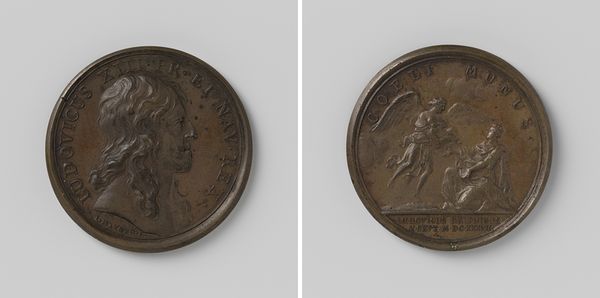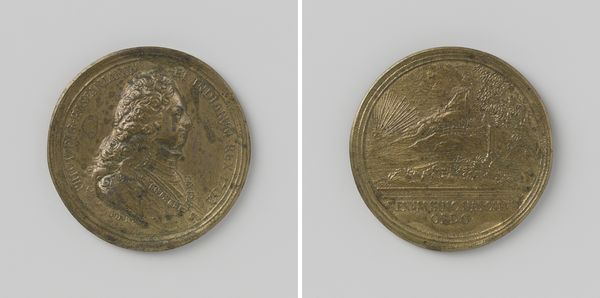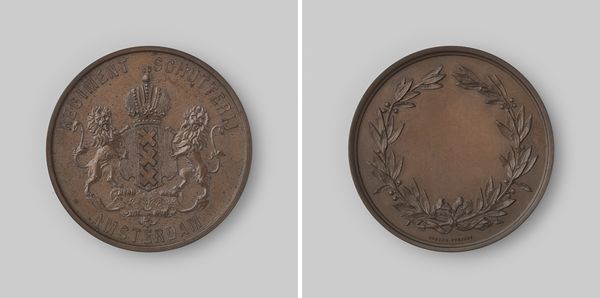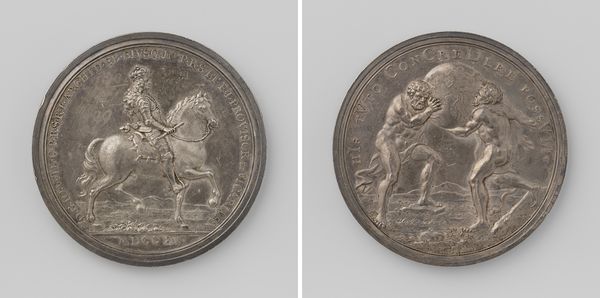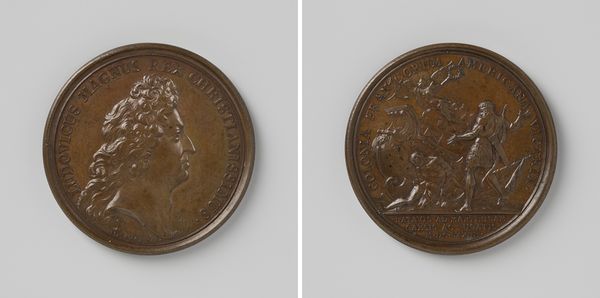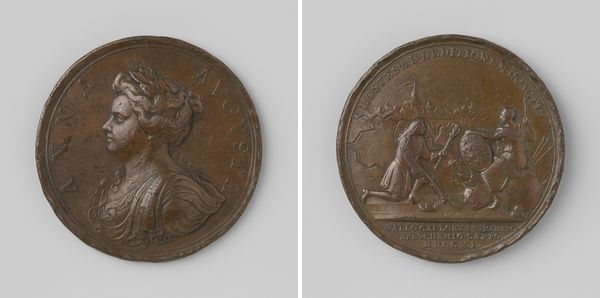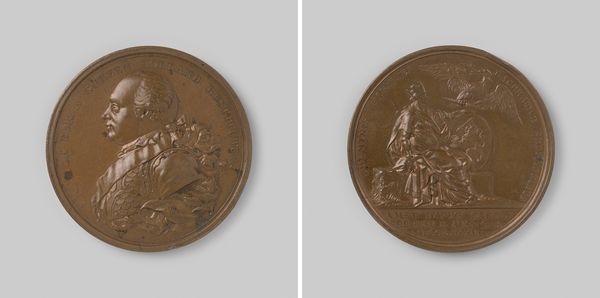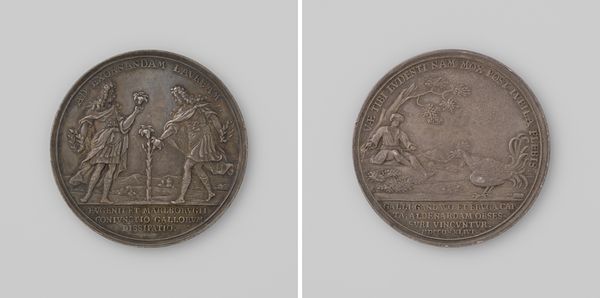
sculpture
#
portrait
#
neoclacissism
#
allegory
#
sculpture
#
ancient-mediterranean
#
sculpture
#
history-painting
Dimensions: diameter 4.8 cm, weight 51.29 gr
Copyright: Rijks Museum: Open Domain
Editor: This is Augustin Dupré's "Libertas Americana: onafhankelijkheid van de Verenigde Staten van Amerika," made in 1783. It's a bronze sculpture, presented as a coin. I'm struck by the contrast between the classical, almost serene portrait on one side and the more dynamic, almost violent scene on the other. What do you see in terms of form and composition that makes this work significant? Curator: Formally, the medal operates on a binary. We have two distinct fields of visual information presented. On one side, the idealized profile. Notice the crisp, clean lines, the almost mathematically perfect proportions conforming to Neoclassical ideals. The inscription itself frames the subject. This serves to both identify and contain. On the opposing side, however, this containment breaks. Figures are engaged in action. The classical figure protects children from a predatory lioness, as the inscription *NON SINE DIIS ANIMOSUS INFANS* borders this engagement. Here the lettering constrains the central pictorial content but remains external, even superfluous, to the subjects in the picture plane. Editor: So, the relationship between the text and image is quite different on each side. The inscription really works with the portrait, while almost competing for attention with the dramatic action scene? Curator: Precisely. Note also how the artist has deployed high and low relief. This is where form transcends pure representation. It speaks to the nature of artistic intention, with different treatments according to content. The profile possesses limited sculptural relief as a device; consider the lioness at the infant's leg--where does Dupré want the viewers attention to lie? Editor: So the portrait is meant to look almost like a cameo. What do the various relief heights imply about hierarchy and artistic purpose here? Curator: Exactly. This careful crafting of visual language shapes meaning itself. The artist manipulates not just form, but our *perception* of form. Look at the two distinct fonts; in what other formal ways can you describe artistic intent? Editor: That's fascinating! I see so much more in its design now than I did initially, particularly the subtleties in the sculpting! Curator: Indeed, this medal is not merely a commemorative object; it's a sophisticated exercise in visual rhetoric.
Comments
No comments
Be the first to comment and join the conversation on the ultimate creative platform.
